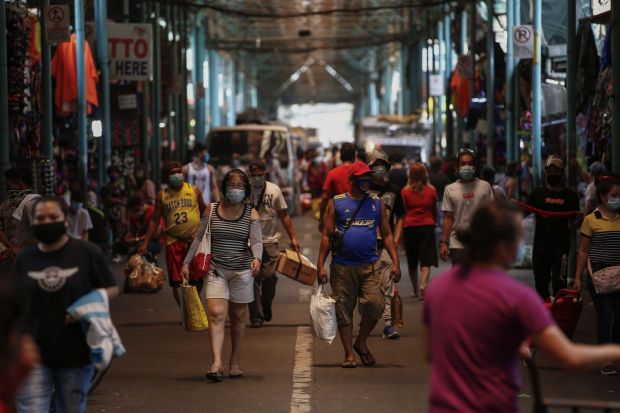Philippines package aids Covid-19 fight, but limited growth impact: economists
THE second stimulus package in the Philippines strengthens the government’s Covid-19 efforts, but has limited implications for the country’s economic outlook, said economists.
Following an earlier 275 billion peso (S$7.72 billion) package, the second package is worth 140 billion pesos, with standby approval for another 25.5 billion pesos for vaccine procurement and additional capitalization of state banks.
While the bill gives the government more means to cope with the pandemic, including by expanding health facilities and infocomms infrastructure, the total size of fiscal measures in both packages is still “nominal”, at 4.1 per cent of gross domestic product (GDP), said Citi economist Nalin Chutchotitham.
This rises to about 7.8 per cent of GDP when combined with financing to cover for revenue shortfall. “But this would not likely cause a significant change to the economic outlook, partly due to the fact that a large portion of the measures are aimed at short-term cash transfers and credit measures,” she added.
Citi’s forecast remains for the Philippines to see GDP contract by 7.9 per cent in 2020, rebounding with growth of 7 per cent in 2021. But the fiscal deficit is now expected at 9.6 per cent of GDP, up from 6.8 per cent previously.
UOB economists Julia Goh and Loke Siew Ting similarly retain “a cautious view of a modest economic recovery ahead”, given lingering uncertainties about Covid-19 infections.
Still, various reliefs to individuals and businesses should help revive domestic consumption and investment, while gradual economic reopening in the third and fourth quarters will further aid recovery, they said. UOB’s forecast is for a full-year GDP contraction of 5.5 per cent, in line with official forecasts, as well as 7 per cent growth in 2021.
Google mobility indicators suggest that the economy is still 40 per cent down from the pre-pandemic activity level, while manufacturing output and vehicle sales continued to record sharp contractions in July, said Ms Chutchotitham.
With inflation retreating to 2.4 per cent in August, down from 2.7 per cent in July, Citi expects another policy rate cut of 25 basis points to further support the economic recovery, possibly in November.
The UOB economists, however, expect the central bank to “preserve its ammunition” and keep rates unchanged at least until the first half of 2021.


 Thailand
Thailand




